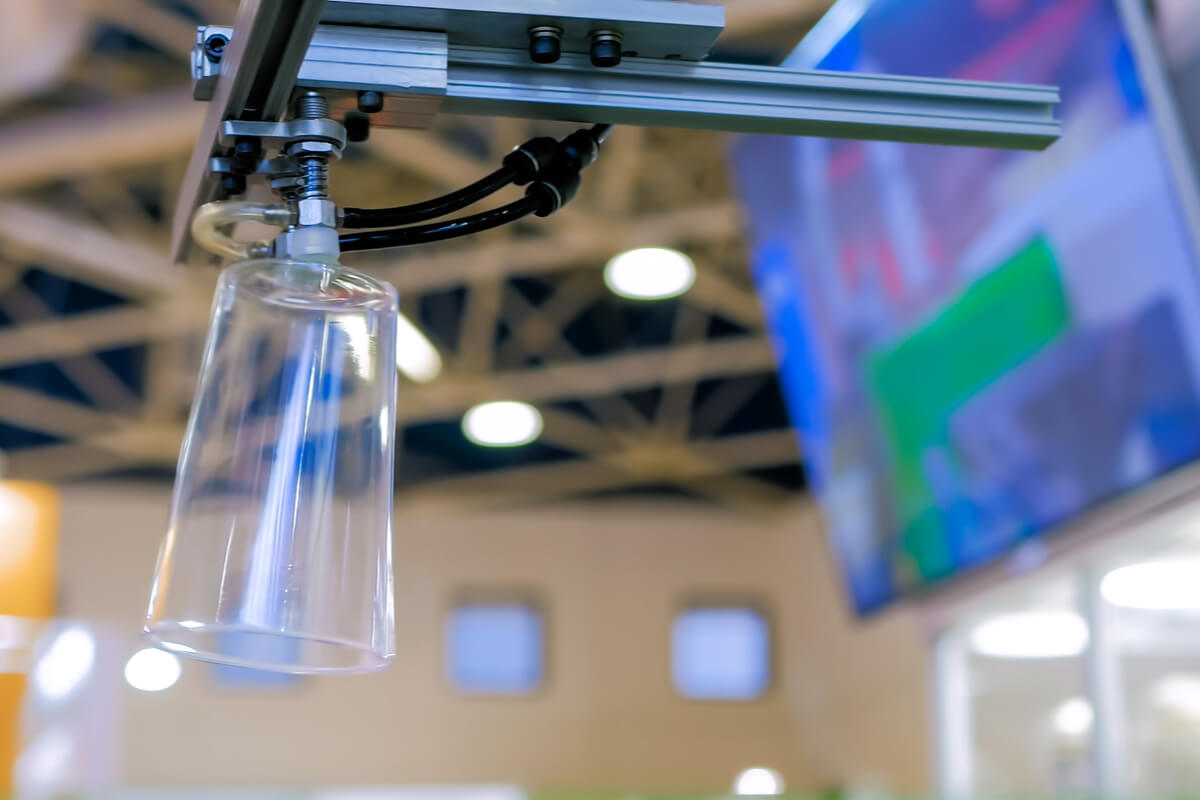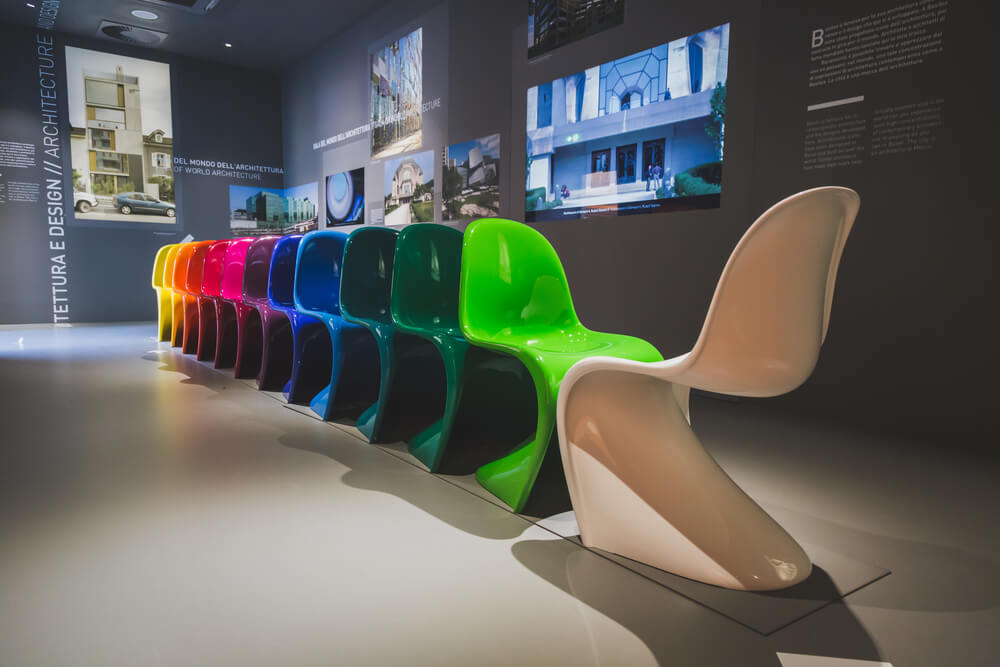The Use of Polypropylene Plastic in Decor

In homes, wood, stone, and metal tend to predominate as fundamental materials, used in both furniture and infrastructures. However, there are other types of materials with an increasing presence. For this reason, we’re going to learn about the use of polypropylene plastic in decor.
Today, we demand that resources offer durability and resistance. This means they have the strength and consistency to remain in good condition for many years. Hence the importance of understanding what we have around us.
When buying from known and trusted sources, we experience a guaranteed quality. Ultimately, this is a way for us to invest in what really interests us and provide us with well-being, comfort, and functionality.
What is polypropylene plastic?

This material is obtained from the polymerization of propylene: a chemical component that allows it to be worked in a simple way to obtain various shapes. Moreover, it’s sustainable and malleable, offering resistance to all kinds of uses.
We use polypropylene plastic for packaging, textiles, cars, and, of course, home furnishings. In addition, it’s nourished by a series of special antioxidants that prevent oxidation–one of the biggest problems that any material faces.
It was synthesized for the first time in 1951 by John Paul Hogan and Robert Banks. And, later, it acquired great importance in different sectors, especially in the industrial one. Currently, it’s the second most widely used synthetic plastic in the world, which gives it great social roots.
Decorative resources made with polypropylene plastic
As more and more furniture manufacturers opt for this material, there are numerous resources on the market. Let’s look at some typical examples:
- A particular case is plastic chairs. They’re lightweight, versatile, easily transported, and sold in different colors. They usually have simple and basic shapes, as well as a smooth surface that’s soft to the touch.
- As for small and functional items, we can find different examples in multiple varieties and designs. These include garbage cans, storage boxes, food containers, glasses, flowerpots and so much more.
- For outdoor use, tables and sun loungers made from polypropylene plastic are a popular option. This material resists the inclemencies of the weather and doesn’t succumb to heat or the ultraviolet rays of the sun.
- Small furniture items, such as occasional tables are completely simple and functional resources. When made in this material, they tend to keep schematic and simple aesthetic patterns–without design complications and with straight or sinuous lines.
Polypropylene plastic design: a contemporary trend

Polypropylene plastic offers a series of optimal qualities that we can work without complications. Many designers and architects have used it for different interior design jobs.
It should be noted, for example, that the Panton chair has an appearance that reflects the characteristics we’ve exhibited so far. It shows the sinuous and organic character that reflects in plasticity and flexibility–as if it were a docile material.
Another case is the Gruvyer chair, which is also made from this material. The shape is basic and functional, but it has a series of designs and inputs that give it a much more unique look. It’s tough and holds quite a bit of weight despite looking flimsy.
Very common in household items
Instead of resorting to the typical kitchenware gadgets, the market offers us another possibility. This allows us to energize the aesthetics of our homes and generate a certain feeling of modernity.
We can find cutlery, cutting boards, containers, tongs, plates, and even polypropylene plastic shelving. The choice is very wide, everything is a matter of choosing with pleasure and making the most of it.
In short, polypropylene plastic is a material that, in this sense, is multidisciplinary. In other words, a resource that’s currently in fashion.
In homes, wood, stone, and metal tend to predominate as fundamental materials, used in both furniture and infrastructures. However, there are other types of materials with an increasing presence. For this reason, we’re going to learn about the use of polypropylene plastic in decor.
Today, we demand that resources offer durability and resistance. This means they have the strength and consistency to remain in good condition for many years. Hence the importance of understanding what we have around us.
When buying from known and trusted sources, we experience a guaranteed quality. Ultimately, this is a way for us to invest in what really interests us and provide us with well-being, comfort, and functionality.
What is polypropylene plastic?

This material is obtained from the polymerization of propylene: a chemical component that allows it to be worked in a simple way to obtain various shapes. Moreover, it’s sustainable and malleable, offering resistance to all kinds of uses.
We use polypropylene plastic for packaging, textiles, cars, and, of course, home furnishings. In addition, it’s nourished by a series of special antioxidants that prevent oxidation–one of the biggest problems that any material faces.
It was synthesized for the first time in 1951 by John Paul Hogan and Robert Banks. And, later, it acquired great importance in different sectors, especially in the industrial one. Currently, it’s the second most widely used synthetic plastic in the world, which gives it great social roots.
Decorative resources made with polypropylene plastic
As more and more furniture manufacturers opt for this material, there are numerous resources on the market. Let’s look at some typical examples:
- A particular case is plastic chairs. They’re lightweight, versatile, easily transported, and sold in different colors. They usually have simple and basic shapes, as well as a smooth surface that’s soft to the touch.
- As for small and functional items, we can find different examples in multiple varieties and designs. These include garbage cans, storage boxes, food containers, glasses, flowerpots and so much more.
- For outdoor use, tables and sun loungers made from polypropylene plastic are a popular option. This material resists the inclemencies of the weather and doesn’t succumb to heat or the ultraviolet rays of the sun.
- Small furniture items, such as occasional tables are completely simple and functional resources. When made in this material, they tend to keep schematic and simple aesthetic patterns–without design complications and with straight or sinuous lines.
Polypropylene plastic design: a contemporary trend

Polypropylene plastic offers a series of optimal qualities that we can work without complications. Many designers and architects have used it for different interior design jobs.
It should be noted, for example, that the Panton chair has an appearance that reflects the characteristics we’ve exhibited so far. It shows the sinuous and organic character that reflects in plasticity and flexibility–as if it were a docile material.
Another case is the Gruvyer chair, which is also made from this material. The shape is basic and functional, but it has a series of designs and inputs that give it a much more unique look. It’s tough and holds quite a bit of weight despite looking flimsy.
Very common in household items
Instead of resorting to the typical kitchenware gadgets, the market offers us another possibility. This allows us to energize the aesthetics of our homes and generate a certain feeling of modernity.
We can find cutlery, cutting boards, containers, tongs, plates, and even polypropylene plastic shelving. The choice is very wide, everything is a matter of choosing with pleasure and making the most of it.
In short, polypropylene plastic is a material that, in this sense, is multidisciplinary. In other words, a resource that’s currently in fashion.
All cited sources were thoroughly reviewed by our team to ensure their quality, reliability, currency, and validity. The bibliography of this article was considered reliable and of academic or scientific accuracy.
- AA. VV.: Vivir en la ciudad: diseño contemporáneo para la vida urbana, Blume, 1997.
- Pesudo Chiva, María Carmen: Formas curvas alabeadas, Cultivalibros, 2009.







